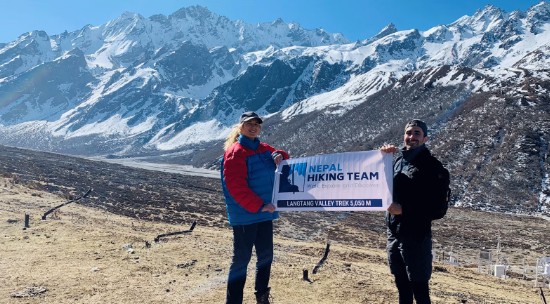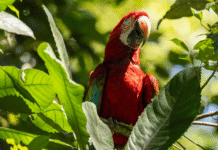The Langtang Valley Trek offers an unforgettable Himalayan adventure, combining breathtaking landscapes, rich cultural experiences, and moderate difficulty levels. Situated just north of Kathmandu, it’s one of Nepal’s most accessible and affordable treks. Whether you’re a seasoned trekker or a first-timer, understanding the costs involved is crucial for effective planning.
️ Overview of Langtang Valley Trek
- Location: Langtang National Park, Nepal
- Duration: 7–10 days
- Maximum Elevation: 4,984 meters (Tsergo Ri)
- Difficulty Level: Moderate
- Best Seasons: Spring (March–May) and Autumn (September–November)
The trek begins at Syabrubesi, a village approximately 7–8 hours’ drive from Kathmandu. From there, trekkers journey through lush forests, traditional Tamang villages, and alpine meadows, culminating at Kyanjin Gompa. The route offers stunning views of peaks like Langtang Lirung, Ganesh Himal, and Dorje Lakpa.
Detailed Cost Breakdown
1. Permits and Entry Fees
To trek in the Langtang region, trekkers are required to obtain two essential permits:
- Langtang National Park Entry Permit: NPR 3,000 (approximately USD 23)
- TIMS (Trekkers’ Information Management System) Card: NPR 2,000 (approximately USD 15)
Note: SAARC nationals may receive discounted rates for these permits.
2. Transportation Costs
Reaching the trailhead at Syabrubesi involves a scenic drive from Kathmandu:
- Local Bus: NPR 700–1,200 (USD 6–10) one-way
- Private Jeep: NPR 10,000–15,000 (USD 75–115) one-way (shared among 5–7 people)
Round-trip transportation costs can range from USD 20 to USD 230, depending on the mode of transport and group size.
3. Accommodation Expenses
Teahouses along the trekking route provide basic lodging:
- Teahouse Lodging: NPR 500–1,500 (USD 4–12) per night
- Meals: NPR 1,500–2,500 (USD 12–20) per day
Total accommodation and meal costs for the entire trek can range from USD 85 to USD 200.
4. Guide and Porter Fees
While optional, hiring a guide or porter can enhance the trekking experience:
- Guide: USD 25–35 per day
- Porter: USD 15–25 per day (carries up to 20kg)
Hiring both a guide and a porter can cost between USD 40 and USD 60 per day.
5. Gear Rental and Purchase
For those without appropriate trekking gear:
- Rental Costs (per day):
- Sleeping Bag: USD 1–3
- Down Jacket: USD 1–3
- Trekking Poles: USD 1
- Rain Jacket: USD 1
Total gear rental for a 10-day trek can amount to approximately USD 30–50.
6. Miscellaneous Expenses
Additional costs to consider:
- Travel Insurance: USD 50–100 (ensure it covers high-altitude trekking)
- Wi-Fi and Charging: USD 2–5 per session
- Snacks and Drinks: USD 5–10 per day
- Tipping: USD 5–10 per day for guides/porters
Total miscellaneous expenses can range from USD 30 to USD 60.
Estimated Total Cost
| Category | Budget Trekker | Comfort Trekker |
| Permits | $30 | $30 |
| Transportation | $20 | $60 |
| Accommodation & Meals | $85 | $200 |
| Guide & Porter | $0 | $400 |
| Gear Rental | $30 | $50 |
| Miscellaneous | $30 | $60 |
| Total | $195 | $800 |
Note: Prices are approximate and can vary based on individual preferences and group sizes.
Key Takeaways
- Affordability: Langtang is one of Nepal’s most budget-friendly treks.
- Accessibility: Easily reachable from Kathmandu without the need for domestic flights.
- Cultural Richness: Experience the unique Tamang culture and hospitality.
- Natural Beauty: Witness stunning landscapes and panoramic mountain views.
- Flexibility: Options to trek independently or with guides/porters.
❓ Frequently Asked Questions (FAQs)
Q1: Is the Langtang Valley Trek suitable for beginners?
Yes, the trek is of moderate difficulty, making it suitable for beginners with a reasonable level of fitness.
Q2: Can I trek independently without a guide?
Yes, independent trekking is allowed. However, hiring a guide is recommended for safety and navigation.
Q3: Are there ATMs along the trekking route?
No, it’s advisable to carry sufficient cash in Nepalese Rupees for the entire trek.
Q4: What is the best time to undertake the Langtang Valley Trek?
The best times are during the spring (March–May) and autumn (September–November) seasons.
Q5: Is travel insurance necessary for the trek?
Yes, comprehensive travel insurance covering high-altitude trekking is essential.




